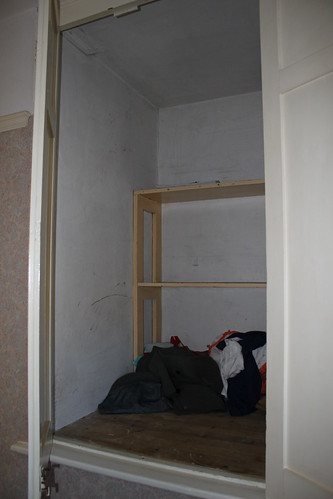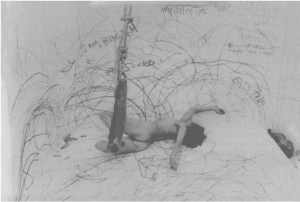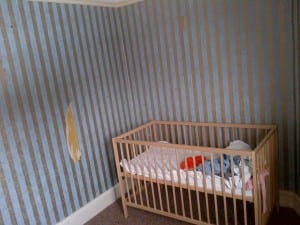What makes a home different?
At home you are generally safe, comfortable and mostly in control of what comes in and out. You feel guarded somehow from the outside world right? I find the places and sites where we spend most of our lives begin to build up a barrier of familiarity, and a sense of understanding. You become well acquainted with the place, whether it be because of its furnishings or maybe even its inhabitants.
So the real question here is ‘What makes a familiar place unfamiliar’? Is it something to do with space, its temperature, its contents? All these things make your home special and unique to you. So I’ve decided to make the kitchen, probably one of the most lived in spaces of the house, different. I feel as though if audience members don’t feel comfortable in an environment their actions and opinions may be more interesting to explore during the performance. The various sounds of a kitchen, which I’ve been experimenting with, will certainly add to that unfamiliarity if edited and manipulated correctly. I find myself editing sounds constantly and changing the way they almost speak to an audience member. What happens when you’re trying to have a conversation with someone who speaks a different language – It all sounds like unknown noise and it’s difficult to communication and understand what is going on.
[peekaboo_link start=”visible”] Warning! Contains Performance Spoliers [/peekaboo_link][peekaboo_content name=”Spoilers” start=”hidden”]
Messing with people’s perceptions about what to expect is what Daniel Kurkakovic’s sound project called Other Rooms, Other Voices is linked to. Firstly his title, “I hoped there would be the recognition of something familiar, but on the other, I intended the inversion would cause a certain confusion” ((Weiner, Lawerence et al (1998) other rooms other voices Switzerland: Memory cage editions. ) )). Firstly the word “other” is very vague and could have a large scope of different meanings. This gap between familiarity and unfamiliarity could be potentially quite small. This is the place where I would like my audience to settle in during the performance, to know that they are familiar with certain aspects of the performance but not fully in control due to the changing soundscape and environment.
Kurkakovic states
“I am interested in the association, which can awaken a very personal story or anecdote of the listener…the tension may then lead to the following questions: Where is my voice? Where is my own perceptual ability?” ((Weiner, Lawerence et al (1998) other rooms other voices Switzerland: Memory cage editions. ) )) Audience questioning is a heavy part of my performance and the ability to access those thoughts will be crucial to the individual unique performative experience.
(Weiner, Lawerence et al (1998) other rooms other voices Switzerland: Memory cage editions)
“Beescope uses the main medium of radio: language. In itself, language does not have any meaning. It generates meaning depending on how it is used” ((Weiner, Lawerence et al (1998) other rooms other voices Switzerland: Memory cage editions. ) )) Recording and importing kitchen sounds on their own sound like random noises collaborated together, but I do believe the interpretation and manipulation creates its own voice. This therefore enables audience members to have the scope to explore and discover ideas and thoughts for themselves throughout the soundscape.
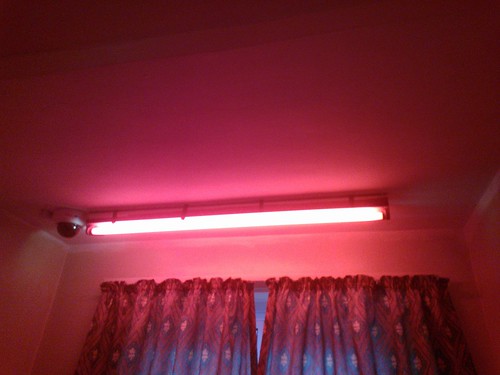
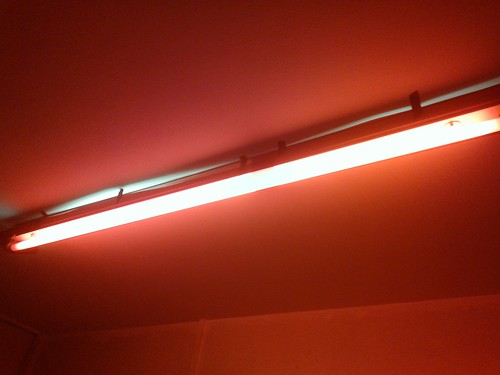
(Images taken by myself Tuesday 12th March 2013 source: Flickr)
This feeling of unsettlement and unknowing is exactly how I want my audience to feel, to undergo a journey of their own personal discovery through the connotations which the soundscape ignite for them. To enhance this experience I have decided to make the room red. The colour red has many contrasting and different connotations which will hopefully add to the confusion and uncertainty. I will also be adding several heaters to the environment to make it quite warm, stuffy and claustrophobic this should hopefully make the environment quite unsettling and unfamiliar. Making the audience listen to the soundscape in this stationary environment may make the headphones seem safe. This may force the audience to keep listening and therefore continue the performance. The fact that the environment is so still may add to the tension and the nervousness created by the soundscape.
Overall I aim for the audience to feel unsettled in this room and so hopefully their own experiences can be delved in to, therefore producing an individual, unique personal experience for everyone involved. [/peekaboo_content]
